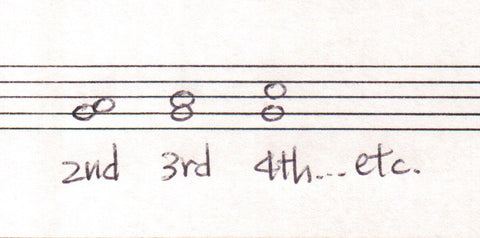
If you've started learning how to read music, please remember. Of course, it's essential to be able to name individual notes on the staves. But being able to read intervals is even more critical. Piano players, for example, are playing more than 1 note at a time all the time. Sometimes you may need to read and play 8 notes at once, 4 notes with the right hand and another 4 notes with the left hand. Do you think you have time to name each individual note? Of course not. This is why being able to see and identify the intervals on the spot is so useful.
There is another reason why it's important for people who play any musical instrument or sing. For example, you read and play (or sing) a note and go to the next note. What if the next note is the same note as the previous note? Why should we waste our time to rename this next note forgetting which note you've just played? What if the next note is one step higher. Then, you can just go up the 2nd degree (interval) by remembering which note you've just played.
The importance doesn't even stop there. While learning different intervals, I highly recommend people who have started learning how to play musical instrument or sing, incorporate identifying the sound of the intervals. Train yourself to identify how each interval sounds like by doing ear training with your teacher or online ear training course. Singing the intervals is a great way to develop hearing each interval correctly.
Music happens in time. Even if you can name all the notes on the staves, unless you put that in the context of music, you won't be able to use them musically. So, I encourage you all to take your time and incorporate identifying intervals regularly. It will not only help you to read music much quicker but also help you to hear the music in advance.
